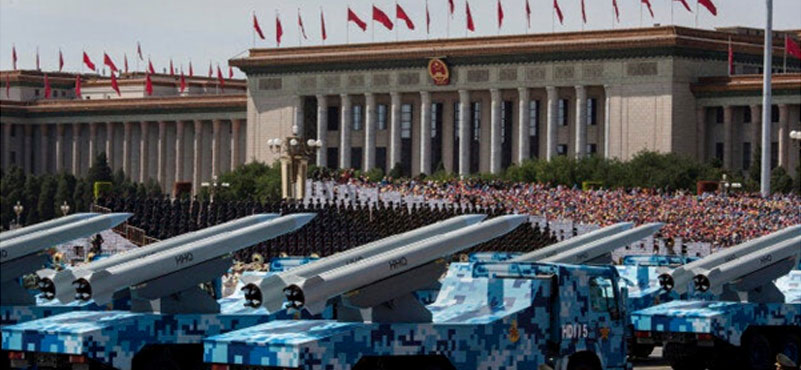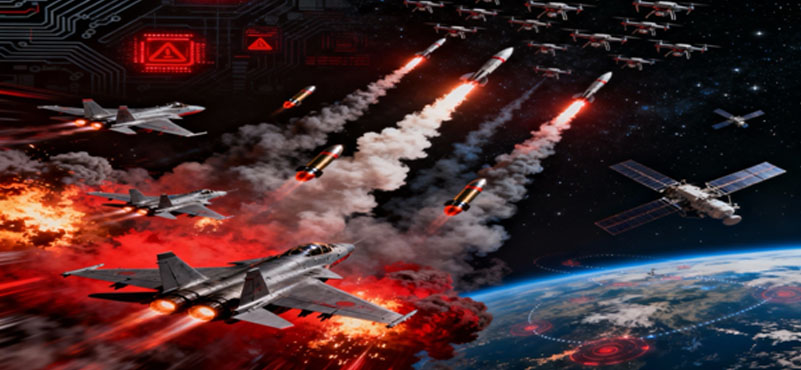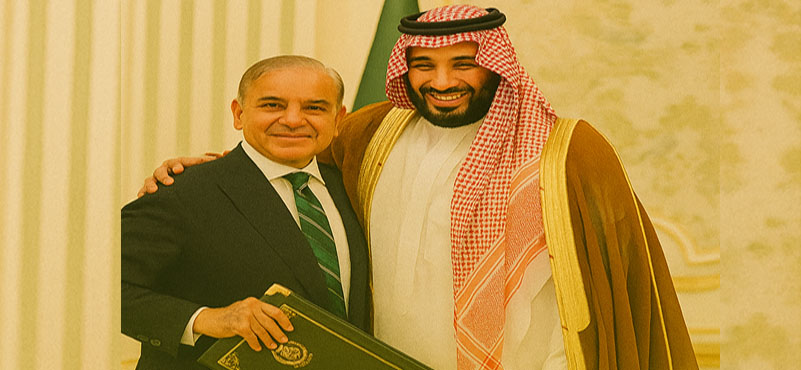Introduction
On 03 September 2025, China held its biggest military parade in its modern history, showcasing powerful high-tech weaponry to mark 80 years since Japan’s defeat at the end of the Second World War.
President Xi Jinping was flanked by Russian President Vladimir Putin and North Korea’s Kim Jong-un, the first North Korean leader to attend a Chinese military event in 66 years. The twenty-six other leaders who attended and were witness to a procession of advanced Chinese weaponry and troops marching in step included Belarus President Aleksandr Lukashenko, Iranian President Masoud Pezashkian, Indonesian President Prabowo Subianto, Myanmar Junta Chief Min Aung Hlaing and Pakistani Prime Minister Shebaz Sharif along with General Asim Munir.
The parade celebrated the role of Communist fighters against the Japanese presenting the party with Xi dressed in a Mao era coat as a key contributor in the post war international order. The optics while reflecting its deepening regional influence were designed to project a vision of Chinese power to the world.
The Display of Military Might
The 70-minute parade at Tiananmen Square displayed an expanding array of military hardware. From tanks and drones to long-range and nuclear-capable missiles, fighter jets and stealth aircraft, the parade also revealed advances in People’s Liberation Army (PLA) weapons and assets.
The procession opened with more than 10,000 troops. Formations on parade included ground, naval and aerial drones, strategic missiles, and a cyber space combat force. China a leader in hypersonic missiles showed its latest Yingi series described as ‘a strategic hammer.’ The new variant of the two stage ICBM DF-5C was also on display.
There were reported sightings of the J15-DT – China’s new, carrier-based electronic warfare jet. Raymond Kuo, director at Rand Corporation, described it as a flying support system and decoy for fighter jets, keeping track of moving targets for the fighters, and drawing counterattacks away from them. Also known as ‘wingman’ drone it flies alongside manned warplanes and offers autonomous combat support.
Kuo also noted a new submarine-launched intercontinental ballistic missile, demonstrating progress in China’s efforts to build a “triad” of nuclear missile systems that complement each other and offset each other’s weaknesses by launching from the land, air, and sea.
Drawing lessons from the Russia-Ukraine war, where drones are being widely used a key takeaway was the growing emphasis on counter-drone systems and airborne early warning aircraft. The FH-97 stealth combat drone, paired with directed-energy weapons and microwave defences, indicates that China foresees swarming, autonomous warfare where machine speed could outpace human reaction. Unmanned combat platforms such as robot wolves, “Sharp Sword” reconnaissance and strike drones showcased China’s transition into “new-age warfare”
The parade witnessed significant participation of contingents of the PLA’s Space Force, Cyber Force, Information Support Force, and Logistics Support Force. Electronic Warfare vehicles and AI-enabled command platforms were showcased to demonstrate how China aims to paralyse enemy networks and sustain its own decision-making in conflict.
Ground-based air-defence and antiballistic missile systems such as the HQ-20, HQ-19, and HQ-29 that form part of a multi-layer air and missile defence network and China’s “nuclear triad”—including the JL-3 SLBM, the DF-16 ICBM and the new DF-5C with more than 20,000 km range were also showcased.
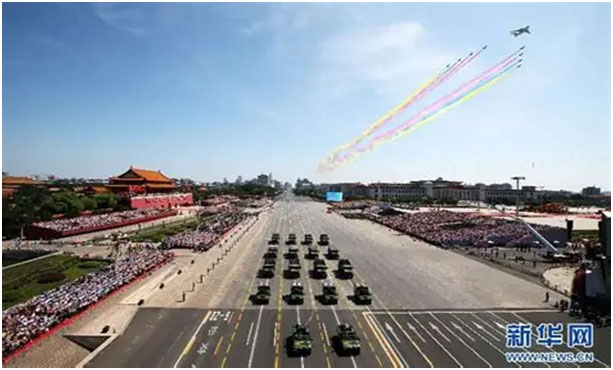
Jennifer Parker, at UNSW Canberra, said it was important to “break apart” real capability from what she called China’s information warfare campaign. “Associated with parades or exercises or demonstrations is always a huge degree of deception,” she said. “But I don’t think we should underestimate China’s capabilities – they are a very capable military, and I think we should be quite concerned.”
Drew Thompson, at the S Rajaratnam School of International Studies said the display was intended to “give the US, Europe, and China’s neighbours a capability demonstration, should they consider challenging China’s core national interests.”
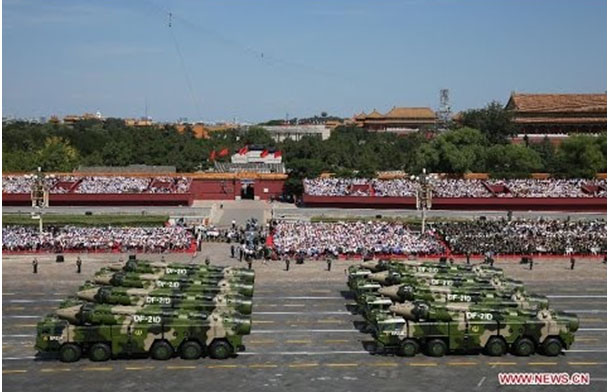
The Speech
The highly choreographed display and the guest list were designed to send a message about the strength of China. Speaking at the parade President Xi said that “today humanity is again faced with the choice of peace or war, dialogue or confrontation, win-win or zero sum”, warning that China was a great nation that “is never intimidated by any bullies.” He said the past showed that Chinese people always rallied together “to defy the enemy” when faced with adversity.
As per Wen-ti Sung, at the Atlantic Council’s Global China Hub, the images of Xi, Putin and Kim showed that “China is unafraid to stand by its friends even and perhaps especially when they are pariahs in the court of international public opinion.” With both by his side, President Xi underscored his belief that the existing international system led by the US is to blame for current conflicts and confrontation.
“Only when all countries and nations treat each other as equals, coexist in peace and support each other” can they “uphold common security” and “eradicate the root cause of war,” Xi said during the speech to over 50,000 attendees.
The symbolism was hard to miss. In 1959 Chairman Mao Zedong had hosted Kim’s grandfather and the then Soviet leader Nikita Khrushchev, to watch a military parade. That was the last time the leaders of these three countries were together. It was the height of the Cold War, China was isolated from much of the world, as was North Korea, and the Soviet Union was the most powerful and richest among them. Now, it is China that holds the reins.
President Xi’s speech reiterated Mao Zedong’s slogan about the Party “commanding the Gun.” Xi’s speech and every major slogan resolutely reinforced that the military should be loyal to the party and follow its instructions with absolute discipline.
China’s defence indigenisation on display also helps its defence export industry, which is growing in South Asian, African, Latin American, and West Asian countries.
The parade drew an almost immediate reaction from President Trump; “May President Xi and the wonderful people of China have a great and lasting day of celebration. Please give my warmest regards to Vladimir Putin, and Kim Jong-un, as you conspire against the United States of America,” he posted on his Truth Social account.
Implications for India
Chinese technological progress in drones, hypersonic technology, electronic and cyber warfare, and space technology outpace India’s incremental modernisation. For India the it is not about the technological superiority of a missile or a drone but the ecosystem behind them.
India no longer faces a two front war but one consolidated front across its borders with China arming and orchestrating Pakistan. While future wars will be multi-domain, hybrid, and prosecuted across the spectrum of conflict with compressed operation cycles over the escalation ladder, India must prepare not only through developing platforms, acquisitions, structures, doctrines, and training of its Armed Forces but also through integration and innovation.
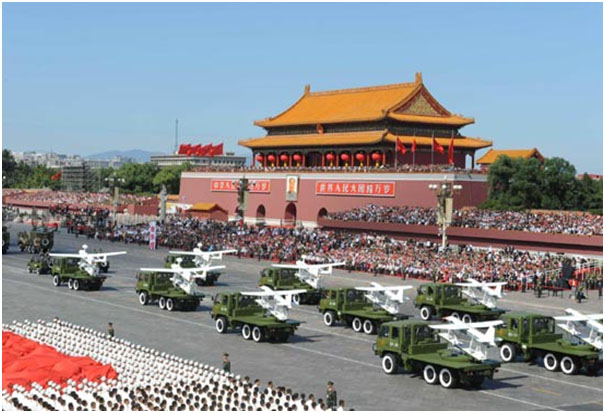
What was invisible but is more significant is the Chinese military-industrial complex and its emerging capabilities. The evolution of its doctrines which have resulted in joint structures, information dominance and the strategic signalling regarding deterrence, partnerships, and legitimacy of the Communist party, project China’s strength, and it’s inevitable and unstoppable rise through a demonstration of large-scale and high-technology military power.
Major General Wu Zeke said the ‘goal is to demonstrate our military’s formidable strategic deterrent capability and win future wars.’ But notwithstanding the impressive orchestration of the parade and highly synchronised music and marching the impact on the measurement of military effectiveness has many more metrics.
The effective integration and operation of these weapon systems and performance in combat remains unknown. Without any real combat experience since 1979 adapting to the complexities and chaos of modern warfare will be challenging.
The Indian defence establishment must replay the parade again and analyse the display with microscopic perception. This is what we are up against! Exactly where do we stand? Need to weigh our own capability with what was shown, so that we can counter each and every weapon system. A deep study is also required to appreciate our security situation in case these same weapon systems are deployed in Pakistan. There is far too much to take away from this parade and should not be brushed away in a perfunctory manner.
Conclusion
Military parades are not mere rituals of military pomp and precision; they are occasions for strategic communication. President Xi’s 2025 vision focuses on rejuvenation as part of China’s aspiration to achieve superpower status by 2049. The guest list was carefully chosen to include strategic partners and exclude important neighbours like India, although Prime Minister Modi was in Tianjin two days earlier to attend the SCO Summit.
As per Vina Nadjibulla, of the Vancouver-based Asia Pacific Foundation, China is positioning itself at the centre of an “alternative world order” while the US is dismantling the order that was put in place after the Second World War. “I think China is now again taking advantage of the fact that the US is destroying its own relationships with its allies,” she said.
The spectacular military display of its fist, times with the 2027 deadline for the PLA to be ready for Taiwan contingencies. Domestically, it instils national pride while signalling that notwithstanding the purging of senior military officers, President Xi is still very much in command. Further, the capability of the military is constantly being sharpened and there has been no dilution in its readiness. For international audiences, the message was deterrence and power projection: China is positioning itself as an alternative to US hegemony and is assuring its friends that it will not be caught unprepared for the wars of tomorrow.
The writing is on the wall; President Xi orchestrated his most forceful showing of China as an alternative global power with military might and geopolitical heft. While commemorating the end of World War II, it conveyed the rapid advancement of the world’s largest military and signalled Xi’s growing ability to project hard power on the world stage.
For India the message is clear too. Notwithstanding an apparent warmth in India-China relations, the fact remains that unless the border issues are resolved, tensions along the LAC will persist and China will keep aiding Pakistan’s military against India. The only way to meet the widening asymmetry is a whole nation approach to security by building own capacities and capabilities.
ABOUT THE AUTHOR
 Maj Gen VK Singh, VSM was commissioned into The Scinde Horse in Dec 1983. The officer has commanded an Independent Recce Sqn in the desert sector, and has the distinction of being the first Armoured Corps Officer to command an Assam Rifles Battalion in Counter Insurgency Operations in Manipur and Nagaland, as well as the first General Cadre Officer to command a Strategic Forces Brigade. He then commanded 12 Infantry Division (RAPID) in Western Sector. The General is a fourth generation army officer.
Maj Gen VK Singh, VSM was commissioned into The Scinde Horse in Dec 1983. The officer has commanded an Independent Recce Sqn in the desert sector, and has the distinction of being the first Armoured Corps Officer to command an Assam Rifles Battalion in Counter Insurgency Operations in Manipur and Nagaland, as well as the first General Cadre Officer to command a Strategic Forces Brigade. He then commanded 12 Infantry Division (RAPID) in Western Sector. The General is a fourth generation army officer.
 Major General Jagatbir Singh was commissioned into 18 Cavalry in December 1981. During his 38 years of service in the Army he has held various command, staff and instructional appointments and served in varied terrains in the country. He has served in a United Nations Peace Keeping Mission as a Military Observer in Iraq and Kuwait. He has been an instructor to Indian Military Academy and the Defence Services Staff College, Wellington. He is a prolific writer in defence & national security and adept at public speaking.
Major General Jagatbir Singh was commissioned into 18 Cavalry in December 1981. During his 38 years of service in the Army he has held various command, staff and instructional appointments and served in varied terrains in the country. He has served in a United Nations Peace Keeping Mission as a Military Observer in Iraq and Kuwait. He has been an instructor to Indian Military Academy and the Defence Services Staff College, Wellington. He is a prolific writer in defence & national security and adept at public speaking.

